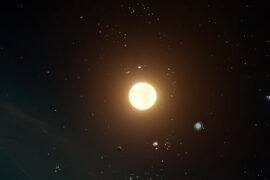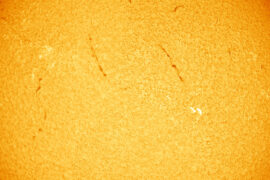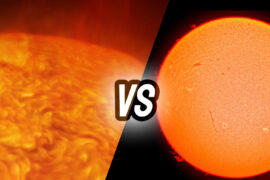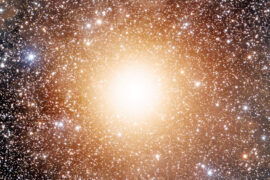For those of us who grew up in large cities, the experience of visiting a place with low light pollution where the sky is full of stars is fascinating. In case you are not familiar with the concept, let me explain.
In large cities, the bright lights from buildings, cars, billboards, etc. illuminate the night sky. As a result, our eyes can perceive fewer stars than we normally would, making the night sky appear a lot more empty. This effect is called “light pollution” and is unique to heavily urbanized areas.
If I look up my window, I can barely count a dozen visible stars on any given night. But our ancestors had a very different view of the night sky. One with thousands of stars filling the sky, igniting their imagination and sense of wonder.
If you are lucky enough to live somewhere where this natural spectacle can be appreciated, you might be wondering. How many stars are out there in the sky?
The question is very interesting, but it can have multiple answers and it can be a bit complicated, so in this article, I’ll try to simplify things and help you find a good answer for it.
The number of stars in the universe
We don’t really know how many stars are out there in the universe.
Just in our galaxy, the Milky Way, there are at least 100 billion stars. That is 1 with eleven zeros. And that is just one galaxy
There are somewhere between 200 billion and 2 trillion galaxies in the observable universe. Each and every one of them might contain just as many stars as our own. As a result, calculating the exact number of stars in the universe becomes a very difficult task.
The closest estimate that we have at the moment is that there could be about 200 sextillion stars in the observable universe. That is 200 with 21 zeroes in front of it.
How many stars are visible in the sky?

But only a very tiny fraction of these stars are visible to us. Most of the stars that we have classified and studied are within our galaxy. Stars in other galaxies are for the most part, too far away to be individually visible to us, even when using large and advanced telescopes.
The number of stars visible to humans is even lower than that as our eyes can only see the brighter, larger, or closer stars. Even under perfect weather and light conditions, the human eye can only see a few thousand stars in the sky.
Apparent magnitude
Astronomers use a metric to determine how bright a star is as seen from Earth, and therefore, how visible it is. This metric is called apparent magnitude and every object in the sky can be measured.
Apparent magnitude goes from negative to positive numbers. The lower the magnitude is, the brighter the object is. For example, the Sun has an apparent magnitude of -26.7, Venus has an apparent magnitude of -4.6, and Betelgeuse, one of the most prominent stars in the sky, has +1.6.
The human eye can see objects with a maximum apparent magnitude between 6 and 7. An average home telescope can see objects up to a magnitude of 14 approximately. That already includes not just stars, but some galaxies and nebulae.
Calculating the number of stars in the sky
As you can see from all the information above, finding an exact number of stars that are visible in the sky is not possible because there are too many variables. And we haven’t even gotten to talking about seasons because remember that the stars in the sky change as the year progresses. You will see different constellations in December than in May.
The good news is that we can at least try to approximate the number.
Several star-counting models have been created over the years. A particularly good one that was published by NASA, can find an average of the number of stars in the sky. The formula is:
Log10N(m) = -0.0003 m3 + 0.0019 m2 + 0.484 m - 3.82That equation seems very complicated at first. But if you look at it, it only has one variable called m which stands for the magnitude of the instrument that you are using to look at the sky.
As mentioned before, our eyes can see objects with a magnitude of 6 or lower. When we input that into the equation, the results are the following.
The human eye can see approximately 5,077 stars in the night sky under good sky conditions. That means in places with low light pollution.
If you want the full explanation of the formula, check out this document on NASA’s website.
Summary
- The human eye can see on average 5,077 stars on any given night under the right weather and light pollution conditions.
- It is not possible to determine how many stars are there in the universe, but a current estimate says there could be 200 sextillion stars.
- The number of visible stars in the night sky is going to increase with the help of binoculars or a telescope so it is not a fixed number.







